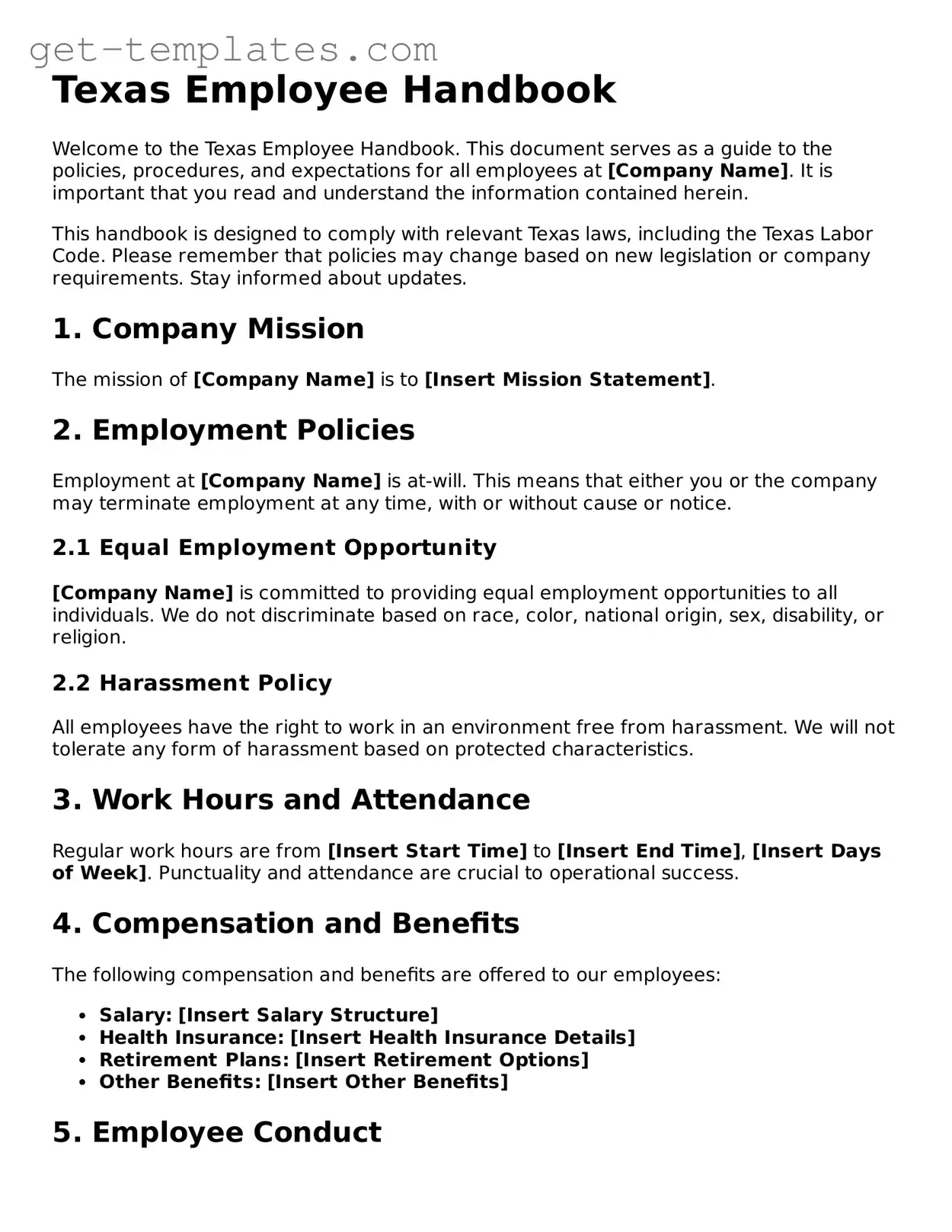Texas Employee Handbook
Welcome to the Texas Employee Handbook. This document serves as a guide to the policies, procedures, and expectations for all employees at [Company Name]. It is important that you read and understand the information contained herein.
This handbook is designed to comply with relevant Texas laws, including the Texas Labor Code. Please remember that policies may change based on new legislation or company requirements. Stay informed about updates.
1. Company Mission
The mission of [Company Name] is to [Insert Mission Statement].
2. Employment Policies
Employment at [Company Name] is at-will. This means that either you or the company may terminate employment at any time, with or without cause or notice.
2.1 Equal Employment Opportunity
[Company Name] is committed to providing equal employment opportunities to all individuals. We do not discriminate based on race, color, national origin, sex, disability, or religion.
2.2 Harassment Policy
All employees have the right to work in an environment free from harassment. We will not tolerate any form of harassment based on protected characteristics.
3. Work Hours and Attendance
Regular work hours are from [Insert Start Time] to [Insert End Time], [Insert Days of Week]. Punctuality and attendance are crucial to operational success.
4. Compensation and Benefits
The following compensation and benefits are offered to our employees:
- Salary: [Insert Salary Structure]
- Health Insurance: [Insert Health Insurance Details]
- Retirement Plans: [Insert Retirement Options]
- Other Benefits: [Insert Other Benefits]
5. Employee Conduct
Employees are expected to conduct themselves professionally and ethically. Any behavior that disrupts the workplace or violates the law will not be tolerated.
6. Safety and Security
Workplace safety is a priority at [Company Name]. Employees must adhere to safety protocols and report any unsafe conditions immediately.
7. Acknowledgment of Receipt
All employees must sign and return this acknowledgment form, confirming they have received, read, and understood the employee handbook.
Thank you for being part of [Company Name]. Together, we contribute to a positive and productive work environment.
